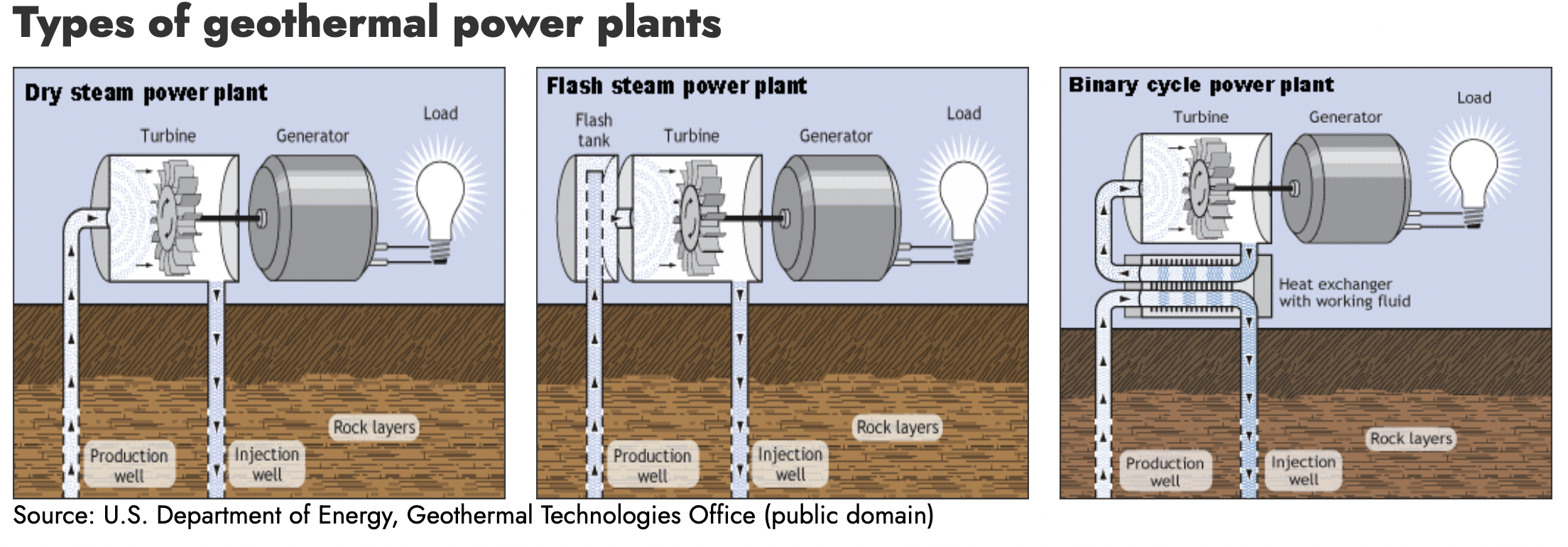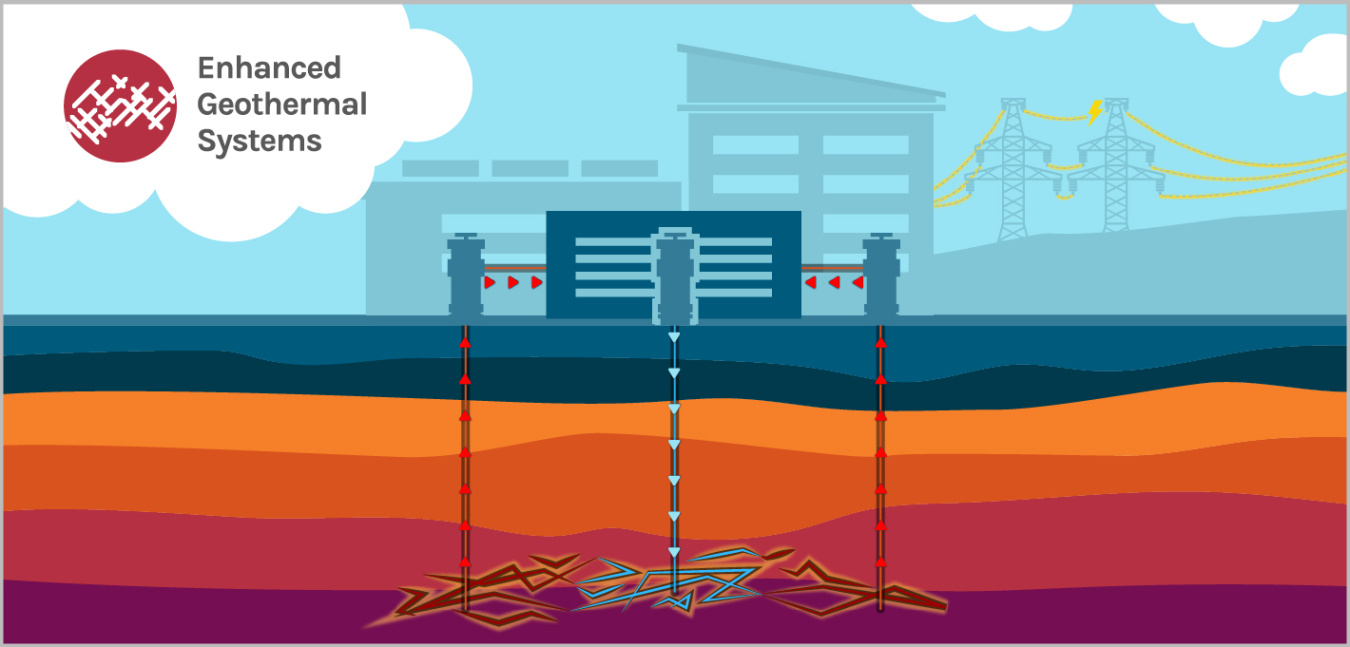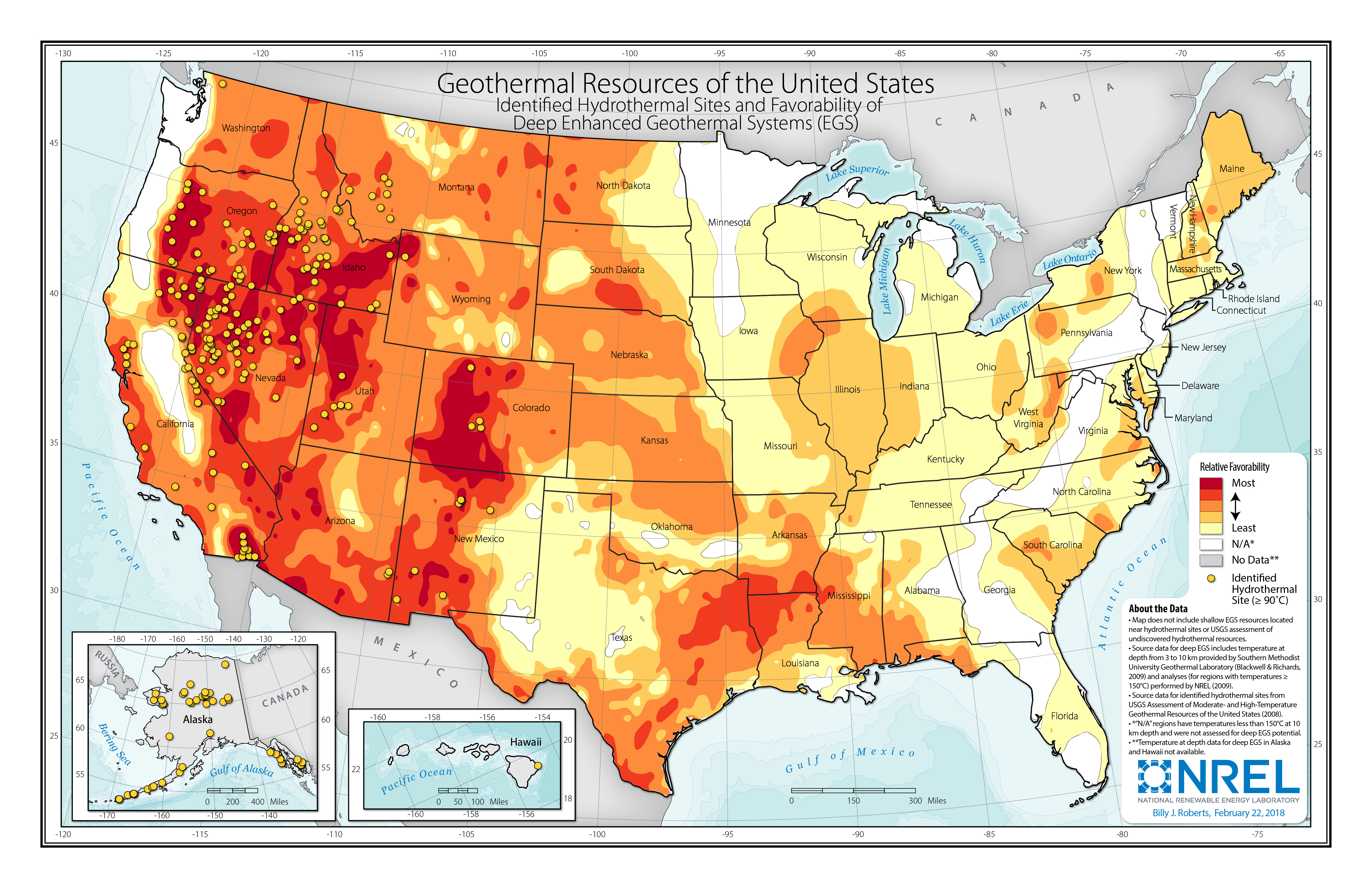Geothermal Electricity
The primary energy source is heat energy from the earth’s core and radioactive decomposition.
Electricity is the secondary energy source.
It is created using a steam turbine (Rankine cycle) similar to coal but usually at lower temperatures.
Some plants use the underground water directly to spin the turbine, while others heat up a separate “working fluid” that spins the turbine.

In the Geysers, about 20 years ago the steam pressure dropped and Lake County and Santa Rosa began sending treated wastewater to inject underground.
Geothermal electricity can run continuously and can help stabilize a grid with high amounts of variable renewable energy (solar and wind).
Traditional Geothermal requires:
- Heat
- Water
- Porosity
Enhanced Geothermal
Enhanced Geothermal uses hydraulic fracturing to create the porosity needed for fluid flow.

Geothermal uses mature oil and gas drilling technologies. However, there is still technical development for different rock types and higher temperatures.

Ground Source Heat Pumps
Geothermal energy is also used to refer to the use of the ground to exchange heat with for heating and cooling.
Stakeholders
- Drillers
- Sonoma Clean Power
- Homeowners
- Grid Operators
Techno-economic
- what is likely LCOE?
US Department of Energy has set a target of $45/MWh for the cost of advanced geothermal electricity by 2035.
- Cannot currently be imported or exported
- Could be used to substitute heat for coal plants
Environmental Issues
- Construction and drilling
- Groundwater risk from fracking and pumping
- Increased seismicity risk
Socio-technical
- Uses skills and technology from the petroleum industry
- Currently enjoys bipartisan support
Policies
- Exploration wells exempt from federal environmental review
- Exemption from CEQA underway in 2025
- IRA Geothermal tax credits were not changed by OB3